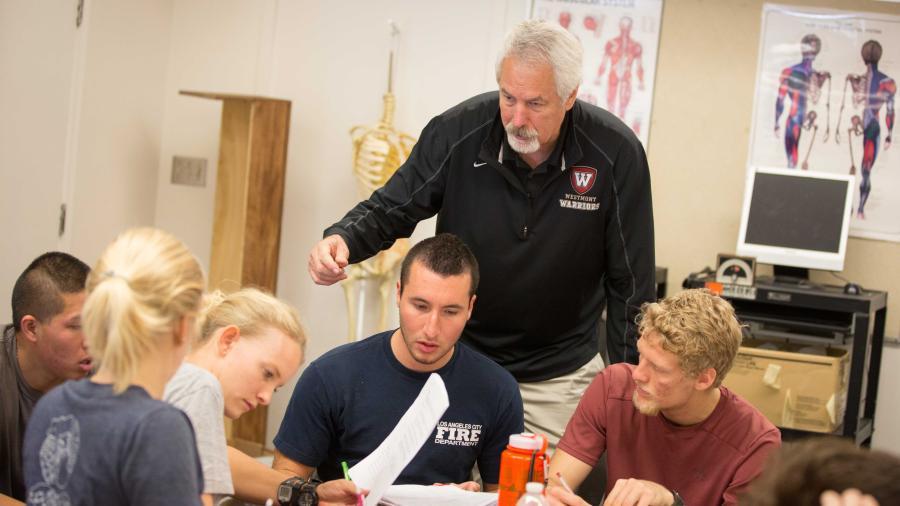
Researchers from Westmont and the University of Bath sent shock waves through the world when they released their findings about the energy cost of sitting versus standing. They discovered that standing naturally at a desk burns only slightly more calories than sitting naturally.
The collaborative research project by Gregg Afman, Westmont professor of kinesiology, and James Betts, Bath professor of public health, was published in Medicine Science in Sport and Exercise. The findings then appeared in 290 news articles reaching about 264 million people living in the United States, United Kingdom, Australia, Indonesia, Singapore, Ireland, Kenya, India and South Africa.
“It’s exciting to have our students involved in research, collaborating and using Westmont’s lab to collect data and contribute to the total data set,” Afman says. “It’s a significant joy to work with an international colleague and friend while making an important contribution to a body of knowledge in our field.”
The project initially involved 15 Westmont students who collected data during Mayterm research trips to Bath in 2014 and 2015. At the Westmont Human Performance Lab, Afman also tested another 10 subjects from the Westmont community.
The research project measured resting metabolic rates (RMR) of 46 healthy men and women and then compared RMR to their metabolic rates while lying down, sitting and standing naturally.
“We used indirect calorimetry to analyze expired air samples and determined individual oxygen consumption under a variety of conditions (i.e, resting, sitting, standing),” Afman says. “Determining the amount of oxygen consumed in the laboratory through gas analysis then converts to calories utilized by each subject.” The results showed that standing naturally burned about nine calories per hour more than sitting—the equivalent of one stalk of celery.
“Workers aiming to burn off their morning latte would have to stand for an average of 20 hours,” the Daily Mail reported.
Afman’s Mayterm students from 2014 and 2015 were also involved in other research involving high-intensity interval training.
A group of 16 students will travel to the University of Bath during Mayterm 2019 to conduct research with Betts in the Department of Health and Exercise Science and will also study Advanced Human Anatomy for a week at the historic lab at the University of Edinburgh.